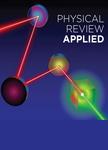版权所有:内蒙古大学图书馆 技术提供:维普资讯• 智图
内蒙古自治区呼和浩特市赛罕区大学西街235号 邮编: 010021

作者机构:Department of Materials Science and Engineering Rensselaer Polytechnic Institute Troy New York 12180 USA Neurosciences Graduate Program University of California San Diego La Jolla California 92093 USA Department of Mathematics Purdue University West Lafayette Indiana 47907 USA Department of Neurobiology School of Biological Sciences University of California at San Diego La Jolla California 92093 USA Department of Physics Applied Physics and Astronomy Rensselaer Polytechnic Institute Troy New York 12180 USA
出 版 物:《Physical Review Applied》 (Phys. Rev. Appl.)
年 卷 期:2025年第23卷第1期
页 面:014027-014027页
核心收录:
基 金:Kavli Institute for Brain and Mind National Science Foundation, NSF, (1916652) NYSTAR Focus Center at Rensselaer Polytechnic Institute, (C180117) National Institutes of Health, NIH, (R01NS125298)
主 题:Nonvolatile storage
摘 要:In terms of energy efficiency and computational speed, neuromorphic electronics based on nonvolatile memory devices are expected to be one of most promising hardware candidates for future artificial intelligence (AI). However, catastrophic forgetting, networks rapidly overwriting previously learned weights when learning new tasks, remains a pivotal obstacle in either digital or analog AI chips for unleashing the true power of brainlike computing. To address catastrophic forgetting in the context of online memory storage, a complex synapse model (the Benna-Fusi model) was proposed recently [M. K. Benna and S. Fusi, Nat. Neurosci. 19, 1697 (2016)], the synaptic weight and internal variables of which evolve following diffusion dynamics. In this work, by designing a proton transistor with a series of charge-diffusion-controlled storage components, we have experimentally realized the Benna-Fusi artificial complex synapse. Memory consolidation from coupled storage components is revealed by both numerical simulations and experimental observations. Different memory timescales for the complex synapse are engineered by the diffusion length of charge carriers and the capacity and number of coupled storage components. The advantages of the demonstrated complex synapse for both memory capacity and memory consolidation are revealed by neural network simulations of face-familiarity detection. Our experimental realization of the complex synapse suggests a promising approach to enhance memory capacity and to enable continual learning.